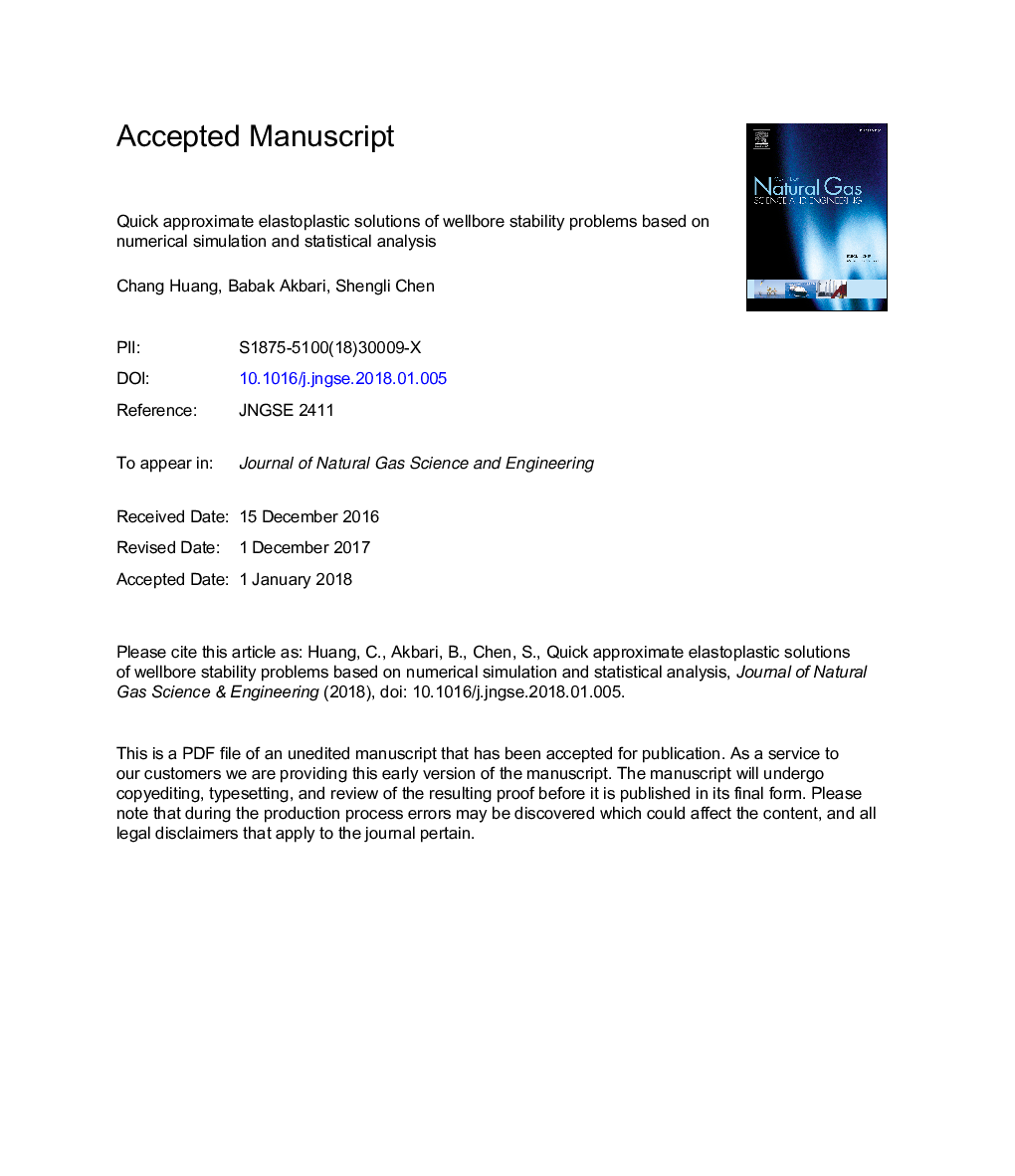| Article ID | Journal | Published Year | Pages | File Type |
|---|---|---|---|---|
| 8128335 | Journal of Natural Gas Science and Engineering | 2018 | 25 Pages |
Abstract
Wellbore instability has been a chronic issue for well operators over several decades in petroleum industry. Traditional linear elastic models may sometimes fail to provide a proper mud weight window for drilling engineers. Elastoplastic models can better represent the rock behavior and, therefore, more accurately evaluate the risk of wellbore instability. However, elastoplastic models have failed to gain popularity in the industry because of the model complexity and computation cost. This work proposes an approximating method in a novel manner, incorporating both the validity of the elastoplastic constitutive model and the rapidity of the linear elastic model to predict wellbore behavior. The non-associative strain hardening Drucker-Prager elastoplastic model is used. The relationship between the yielded zone area calculated by the elastoplastic model and the pseudo-yielded zone area calibrated by the linear elastic model is statistically investigated. It is found that the two can be correlated with high confidence based on a set of common input parameters, like in-situ stresses, wellbore pressure, Young's Modulus, etc. Three correlation equations are provided according to the value range of the predicting terms and an application example is addressed at the end. In conclusion, this approach will help engineers make reliable wellbore stability decisions without resorting to sophisticated elastoplastic models. The equations can be directly used in simple spreadsheet functions or real-time data processing schemes to make faster and more efficient decision.
Related Topics
Physical Sciences and Engineering
Earth and Planetary Sciences
Earth and Planetary Sciences (General)
Authors
Chang Huang, Babak Akbari, Shengli Chen,
